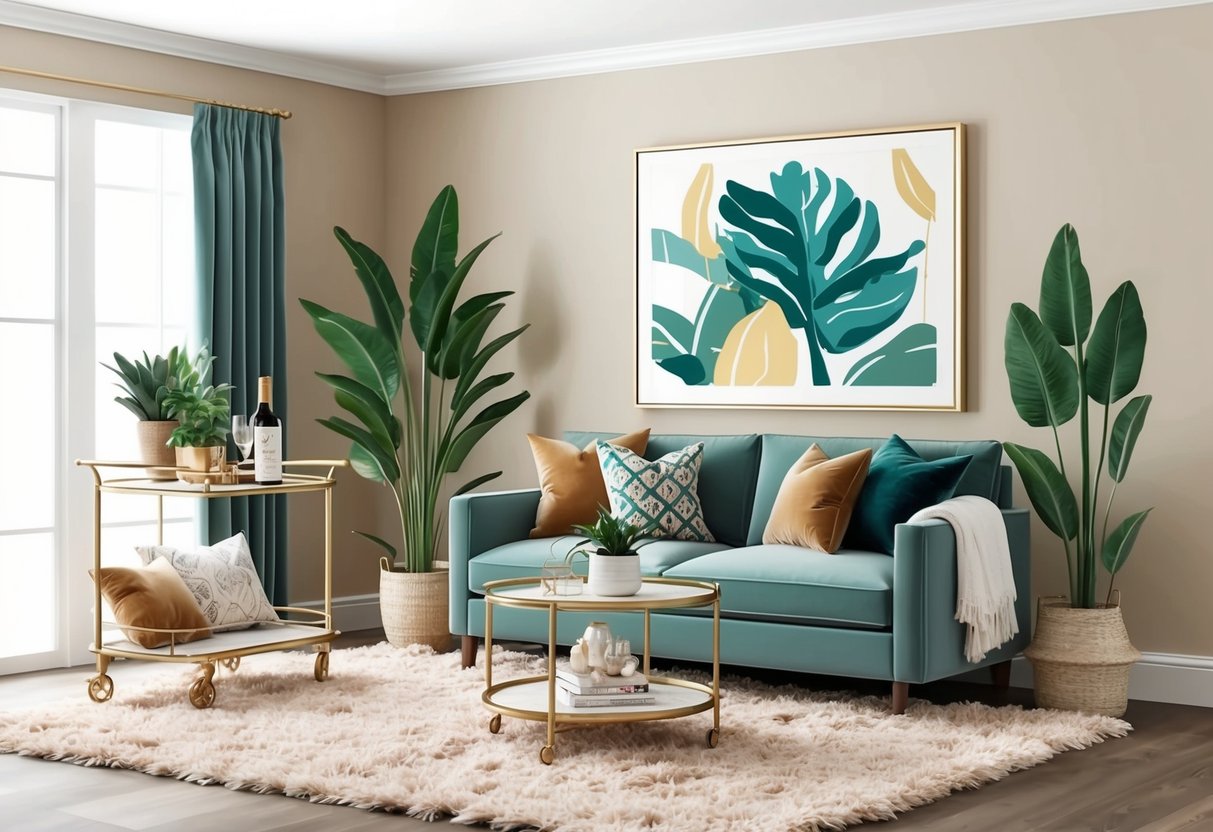
Refreshing a living space doesn’t require a major renovation—simple yet thoughtful decor updates can instantly elevate any room and create a more inviting atmosphere. From introducing texture with plush throw pillows to adding contrast through modern art, even the most subtle changes have a noticeable impact.
These creative home decor ideas cater to different styles, budgets, and preferences. Anyone can achieve a sophisticated look without sacrificing personal taste.
This blog post explores ten inspiring strategies that deliver both style and function. Readers will discover tips like using unique vases as focal points, bringing in designer-inspired pieces, and playing with color and lighting to transform their homes for a fresh and welcoming feel.
Understanding Home Decor Essentials
Successful home decor begins with understanding the basic components that bring a space together. Prioritizing the underlying structure, the right mix of tones, and a coherent decor theme can transform any area into a comfortable and stylish environment.
Key Elements of Interior Design
Interior design is built on essential elements like balance, scale, harmony, and functionality. A thoughtfully chosen focal point, such as a statement wall art or a bold piece of furniture, can create instant interest.
Balancing visual weight across the space ensures it feels inviting yet orderly. Texture also plays a crucial role, whether it’s through plush throw pillows, smooth glass vases, or natural wood accents.
Lighting, both natural and artificial, impacts how colors and materials appear. Consistent attention to these details produces a cohesive atmosphere that feels curated, not cluttered.
Mirrors and plants are frequently suggested in expert recommendations for visually enlarging a room and boosting vitality, as highlighted in popular essential home decor item lists.
Selecting a Cohesive Color Palette
A room’s color palette sets its initial mood and forms the foundation of the decor. Carefully selected hues should support the function and atmosphere of the space.
For example, soft neutrals can create a relaxing retreat, while rich jewel tones may evoke a sense of luxury or drama. Limiting the primary palette to a few shades and using accent colors for variety keeps the space unified.
Use of similar undertones—warm or cool—maintains harmony, even when combining different colors. Consistency in color choices extends to textiles, wall paints, furniture, and decor accents for maximum effect.
Setting Your Decor Theme
A distinct decor theme helps guide all design choices, from furniture style to art and accessory selection. Common themes include modern minimalism, rustic farmhouse, mid-century modern, and bohemian.
Each theme features specific characteristics, such as clean lines in contemporary interiors or layered textiles in eclectic spaces. Establishing the desired mood and visual identity at the outset simplifies decision-making.
The decor theme should also reflect personal interests or lifestyle needs for a sense of authenticity. Decorative motifs, materials, and finishes can be mixed judiciously within a theme to prevent monotony and encourage a space that feels both intentional and lived-in.
Creating Inviting Seating Areas
The right seating areas can make any room decor feel warm, comfortable, and functional. By thoughtfully arranging furniture and optimizing the layout, homeowners can transform even a small living room into an inviting atmosphere where guests and family want to gather.
Arranging Furniture for Social Spaces
To promote conversation and comfort, seating areas should be placed to encourage face-to-face interaction. A popular approach is to position sofas and chairs around a central coffee table, creating a balanced space where people can speak and engage with ease.
Adding accent chairs and a mix of seating types, such as ottomans or benches, provides flexibility for different group sizes. In larger rooms, multiple seating groupings can define separate zones, allowing for simultaneous activities, such as relaxing and chatting.
Using a large area rug helps anchor the arrangement and makes the space feel cohesive. Layered lighting, like floor lamps and table lamps, offers both ambiance and practical illumination, making the area more inviting.
Performance fabrics on sofas and chairs are recommended for high-traffic spaces, blending durability with comfort. Accessories like throw pillows and soft blankets add color and texture, while maximizing warmth and style.
For more ideas, explore this collection of living room decor tips.
Optimizing Layout for Small Living Rooms
Small living rooms benefit from furniture with a slim profile and multi-functional features. Opting for armless chairs, nesting tables, or window seats opens up floor space and makes the area feel less cramped.
Built-in benches and storage ottomans offer extra seating while minimizing clutter, a key factor in maintaining an inviting atmosphere. Floating furniture away from the walls helps define a dedicated seating area, giving the illusion of more space and flow.
Wall-mounted shelves or corner units can display room decor without crowding valuable square footage. Large mirrors, placed strategically, bounce light and visually expand the room, enhancing both brightness and perceived size.
For homes with bay windows or nooks, integrating window seats into the layout adds functionality and coziness. Keeping the palette light and incorporating versatile, movable pieces ensures that the seating area remains adaptable for both everyday living and entertaining.